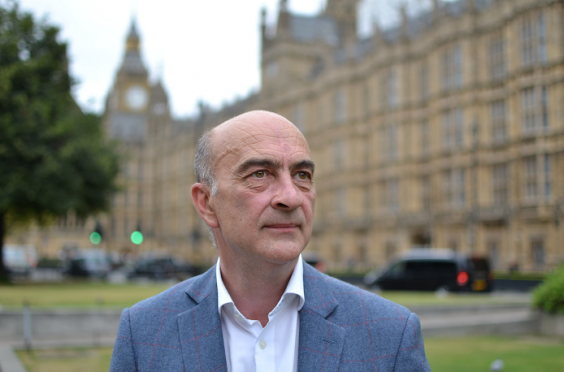It is time to choose. So are you going to vote on Thursday?
Yes, this Thursday.
You would be forgiven for forgetting that Scotland goes to the polls this week to elect over a thousand local councillors to be our voices in our town halls. And yes, we troop out again five weeks later for the UK General Election.
But in a few days time there is the chance to take the political temperature in a democratic exercise which will eclipse the most diligent of opinion polls. Even if turnout is as lamentably low as in previous local elections, Thursday will be a big guide to how June 8 will shape up. And the results will ram home just how much Scotland has changed.
Few now doubt that Scottish politics is radically different from a decade ago. The old certainties of a Labour stranglehold are long gone. The days when the others fought over the scraps and only the SNP offered any resistance are no more.
Indeed, but for the fact that our council elections are held under the Single Transferable Vote system of proportional representation, Labour could be wiped out. As it is, they are in danger of moving towards the “others” category. From heroes to near zeroes.
The Lib Dems, once many people’s second choice, have had a turgid time of late. They are trying to claw back but are a long way from electoral respectability and polling in single figures. The Greens have spent much of the last year backing the SNP on Indyref2 and seem to have relegated their alleged core issue of the environment to the second tier of their concerns. The only recycling which now seems to matter to them is dusting off old Independence arguments.
Which leaves just two Parties in prime position. And, as it happens, they don’t just define the constitutional divide in Scotland but the bread and butter choice as well. Yes and No to separation, Indyref2 versus IndyrefOff and centre left versus centre right. Centralisation versus localism. The third term Scottish Government against the new and official opposition. The Scottish establishment versus the newish kids on the block. Sturgeon head to head with Davidson.
And, in truth, whatever the merits of local issues and the calibre of local candidates, many who grasp the stubby pencil on Thursday will be choosing between these two. Voters will rank the candidates and most will decide Nat or Tory. Nicola or Ruth. Because they know that is the defining choice in Scottish politics today. And especially here in the north-east.
The last time we went to the local polls, the SNP did well, but were still below the heady heights they reached in the 2015 General Election. The Tories were at a lowly 13%. But all the evidence now has the Nationalists set to make further council gains – but in danger of falling short of the 50% they were polling a year or so ago. The Conservatives by contrast are now attracting the interest of nearly a third of all voters. It is likely that the two will hoover up two thirds or more of all the votes.
Thursday will be historic. A historic local election high for the SNP. A record number of Tory councillors. A new low for Labour. It will confirm the new divide in Scottish politics and the new choice: the Scottish National Party or the Scottish Conservative and Unionist Party, Nicola Sturgeon or Ruth Davidson.
Which will you choose?
Who to support?
So there I was on Saturday wandering down to watch my local cricket team. As is my want on a sunny summer weekend. They are a top team. The cricket is good. The banter is top class. And the bar is always open…
It was the opening league fixture of the season and I’ve got to know many of the team. A fine bunch of guys.
But just one problem.
Grange – my local heroes – were playing Heriot’s. My old school. To whom I owe so much and for whom I played in the School’s First X1 for 4 seasons.
Who to support? I pondered. My head hurt……
As I arrived, the home side were fielding. A wicket was taken.
And I knew. I didn’t have a choice. My heart had decided.
I didn’t go overboard of course. Just polite applause. Anything more just wouldn’t have been cricket.
And a few hours later I meandered home. My old school had lost and I felt a wee bit guilty that I wasn’t backing them. But new friendship had won. Which is nice.
Why sound bites matter and slogans work
These musings are strong and stable. It is most definitely not a column of chaos.
Throughout my time in No10 working on various campaigns, not least on the Independence Referendum in 2014, we had to grapple with the hard truth that many people just don’t spend much time drilling down into the detail of any election campaign.
They don’t read manifestos or policy papers. They don’t, sadly, pour over the coverage in newspapers. Yes, I know you are an exception to this rule.
Often, perhaps too often, people vote on a mixture of gut instinct, a single overriding and defining issue and how they feel about the leaders.
Which is why sound bites matter. And slogans work. The attention span of too many voters is shorter than a gnat’s knickknack.
So expect much more of strong and stable. And every time the other’s deride it and the media moans, all they are doing is repeating it and reaching the ears of more people.
